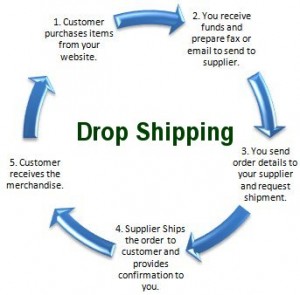A dropshipping business sounds like an enticing prospect and it sure can be. There are many ecommerce businesses on platforms such as Shopify and Magento that are actually dropshippers.
For those wondering what dropshipping is, simply put, a dropshipper is a retailer who transfers orders to a manufacturer or wholesaler from a customer, via their own retail store. This means the retailer doesn't hold any stock; they order it from the wholesaler when a sale is made on their ecommerce store.

As simple and as easy as that sounds it’s not always that clear cut. Here are 5 pitfalls of a Shopify dropshipping business if you don’t do your homework first.
(We've also put together a complete guide to dropshipping if you decide it's the route you'd like to go down!)
1) 'No physical inventory!? It must be a simple chain of events'
There are quite a few people in the ecommerce industry who would like to think they can put their feet up on a tropical beach, sip on that sangria and at a click of a button, process their overly delighted and loyal customers' orders. Rinse and repeat; cash in the bank.
While this is not out of the realm of possibility it’s important to consider that as you're not holding your dropshipping products, it's worth considering the following:
- A customer places an order for several items that you have to order from multiple suppliers. Do you add on the postage and packing from each wholesaler or manufacturer? This could be costly for the customer and put them off.
- A wholesaler or manufacturer is not completely up to date with dropshipping software or apps? For a Shopify store with high product turnover this could quickly become a nightmare of manual processing.
- You've never actually touched, smelled or used the products you are selling: do you think you can write engaging sales copy or speak to a customer over the phone about any product issues or queries?
Get your plan of action down on the costs involved if you use multiple shippers. If you have a low turnover of products, a supplier who is less tech savvy may be all you need, but the higher the volume you may have to research deeper to find that supplier who uses Shopify shipping apps to sync your store with their warehouse via a real time product feed.
2) 'The supplier can handle the customer service'
You will be expected to be the go-to person if a customer has any problems. If you blame your supplier for any problems in relation to missed shipments or broken products the chances are it will fall on deaf ears. Things do go wrong - especially when you don't have full control over the supply chain. It's your Shopify store's reputation that's at stake and as such, it's your responsibility to make sure the customer service is up to scratch to ensure you have a viable ecommerce business.

Be prepared for this:
- Know your products inside out
- Know shipping times for each wholesaler/manufacturer
- Build strong relationships with them
- Provide exceptional customer service
- Be ready to leave a supplier who keeps making mistakes
You must also promote your own products. Your dropshipper probably still has a website that is a throwback to the 1990s listed on the 12th page of Google. If you're unsure as to the importance and best way of marketing your products read our complete guide to SEO on Shopify.
3) 'My supplier will be loyal, even with my large orders'
One of the charms about dropshipping is that starting a dropshipping company is relatively low in capital outlay. No need for a physical shop, products, sending items or receiving returns. But this also means there are many other people out there with the same idea, using the same suppliers.
The problem is that a wholesaler or manufacturer has free reign over who they choose to source their products to. This could mean a better supply deal for a competitor using the same supplier, which then allows them to sell at lower prices, creating razor-thin profit margins for you as your Shopify store struggles to compete.
Consider finding a niche that has yet reached saturation in the market and also define other parts of your company with unique selling points, such as fast free shipping, discounts and a splendid ecommerce design.
Read our article about Shopify themes for inspiration.
4) 'I can order as much or as little as I want'
You can only usually order as much as the supplier has in stock themselves at that point in time but you must consider that many will ask for a minimum order. They do this to prevent time wasters and window shoppers and to seal as much business as they can.
Be prepared by forecasting potential orders. This will help you plan your expenditure. If you think the initial cost is too much for expected orders on your Shopify store then keep looking - there are many directories out there where you can filter suppliers by their minimum order.
5) 'I can make a lot of money through dropshipping'
You definitely can, if you can find the right product, from the right distributor, in the right market at the right time. As mentioned, some markets will cause you to sell products at such thin margins you'll question whether it's really worth it.

Take a look at Google Trends to understand which products are searched for and at what times. Some products are seasonal, some products are in a down trend and some are only popular in certain countries, so think carefully if you want to enter that sort of market.
We hope we haven't scared you off dropshipping. This article is not meant to deter you, but to help define your dropshipping Shopify business. There are many positives to beginning this journey including the cheaper start-up costs, the ease of setting up a website, low overheads, the flexibility of doing business anywhere there's an internet connection, the ability to showcase a wide range of products and the scalability if you plan to expand in future.
Best of luck with your venture and get in touch if you need any design, development or marketing support on your dropshipping journey!



